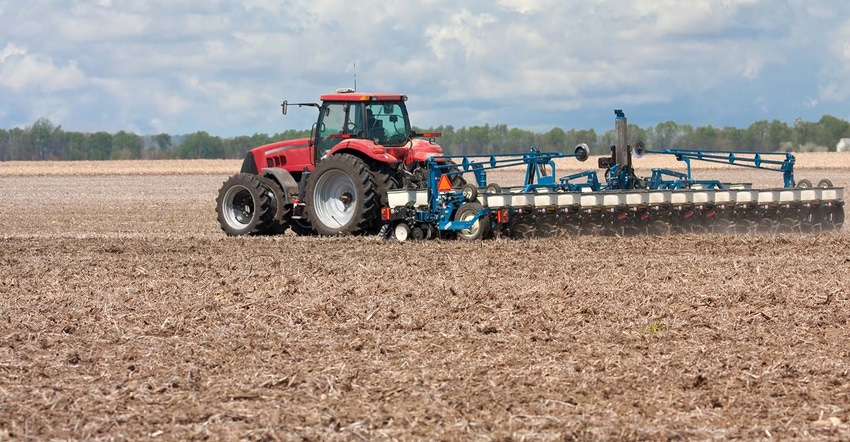
What’s happening in your fields? Click the Feedback From The Field reporting form and give us your first-hand account. Use the interactive map below to see all this year’s reports just by clicking the flagged locations. Click the box in the upper left-land corner of the map to bring up an index of what the different colors of the markers signify and to toggle the week’s reports on and off.
Heavy rains pounded parts of the Midwest last week, inundating a swath of the country from central Texas to southern Michigan. But even in that area, some fields were planted before the storms hit, while other parts of the Plains and Upper Midwest received lighter coverage.
Farmers filing Feedback From The Feed last week on average planted 13% more of their corn crop, and 3% more soybeans. If those gains turn up in Monday’s Crop Progress report from USDA, nationwide corn planting could advance to 28%, compared to the average rate for this week of 47%. Soybean seedings could improve to 6%, half the average of 12% that’s usually in the ground now.
Farmers in the eastern parts of the growing region appear the farthest behind, with some complaining of cold soils on top of wet conditions.
“We are extremely wet and if it quit raining today it would be mid-May at the earliest that we could get into the fields,” was the report from northwest Ohio, which is suffering the fourth wet spring in a row. “I thought last spring and fall were the worst ever, but this spring so far is far worse than 2018.”
Another grower in the area reported 5.5 inches of rain since April 15. “No planting yet,” was the judgement.”
Further west, however, conditions varied. Some growers in the same states noted conditions on opposite ends of the spectrum.
A producer in northwest Missouri said ammonia supplies in the area were low though little corn was planted. “What's planted has emerged and looks good,” was the report. “What's not planted will be a while as the ground dries out.”
A farmer in the eastern part of the state was 60% done with corn planting but most were just getting started after putting down anhydrous. Another grower there was 50% done with corn, but stalled after 5.25 inches of rain. “Can’t get any wetter,” the producer said.
Conditions were even more varied in Nebraska, ground zero for the March “bomb cyclone” that caused severe flooding.
“Started corn planting yesterday and rains again last night. with more rain next 2 weeks,” said a farmer from the south central part of the state. “Planting date becomes an issue. Looks like beans will be in June. Never planted this late since started in early 70s.”
But a farmer further east was 90% done with corn and rated the crop in good condition so far. The operator expected to finish corn planting over the weekend and start with soybeans this week.
About the Author(s)
You May Also Like






